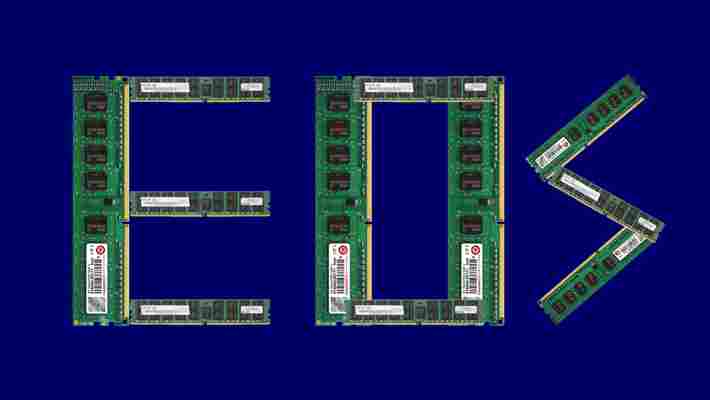Hard Fork is back up and running on all cylinders. It’s the first Moonday Morning of 2019 and that means that there’s a lot to catch up on.

Let’s take a look at what we missed while we were away over the holidays.
1. It turns out that popular online game Fortnite‘s foray into accepting cryptocurrency was actually all just a mistake . According to Epic Games developer and founder Tim Sweeney on Twitter, the company wanted to open a merch store, but somewhere along the lines Monero payment was enabled by the store’s payment processor. I guess we’ll have to stick to old-fashioned money for now.
2. Cryptocurrency hardware wallet manufacturer, Ledger, just released an updated version of its Nano wallet, called the Nano X , at the Consumer Electronics Show (CES) in Las Vegas. Unlike previous Ledger Nanos, the X is equipped with Bluetooth giving it the ability to link directly to mobile phones. It should help make moving cryptocurrency from your Nano a little easier, as previously Nano users had to connect the device to a computer before transactions could be processed. Users will now be able to use a mobile app to check their Ledger Nano X’s balance, and send and receive coins.
3. A fake news website posing as the “NZ Times” has been using the face of ex-Kiwi Prime Minister, John Key, to promote a shady cryptocurrency business. The website published an interview with Key about his interest and beliefs in Bitcoin, only all links diverted to a website for startup Crypto Revolt, local news reports . It’s not the first time we’ve seen celebrity faces used to push cryptocurrency on the masses, in September last year Texan regulators had to go after a company claiming Barack Obama had endorsed its cryptocurrency.
4. The state of New York is putting together a cryptocurrency task force in attempts to improve the regulation of the market. The group will be made up of consumers, investors, blockchain companies, academics, among many others. The members will be recruited by the governor, Senate, and assembly, Verdict reports . The task force will serve to advise the government on everything from the energy efficiency of mining and the impact of cryptocurrencies on tax regulations.
5. The Republic of Ireland is cracking down on illicit cryptocurrency holdings and is implemented new anti-money laundering laws, the Irish Mirror reports . The new Criminal Justice (Money Laundering and Terrorist Financing Amendment) Bill 2019 has been given the go ahead from the cabinet. The new laws will help the gardai crack down on criminals using cryptocurrencies to launder and hide their ill gotten gains.
6. Ethereum-focused development house ConsenSys and computer hardware manufacturer AMD announced a partnership last week which will see the firms try to find ways of making the blockchain scale better. The partnership, known as W3BCLOUD, plans to develop specialist hardware that is more capable of processing blockchain workloads, in the cloud. Indeed, it might be a wise move from AMD , seen as sales of its consumer grade hardware used for cryptocurrency mining have been waning . But it won’t go into the market without competition, last year Intel filed a patent which claimed to make cryptocurrency mining more efficient, and theoretically, more profitable.
Well there you have it. That’s another weekend’s blockchain and cryptocurrency news caught up with; 2019 is officially underway.
EOS block producers briefly crash due to RAM misconfiguration
Fledgling cryptocurrency EOS can’t seem to catch a break. Over the weekend, top block producer, EOS New York, took to Twitter to notify users that several other block producers had crashed due to a RAM-related complication.

It appears that shortly after the overall RAM usage on the platform passed the 1GB mark, the nodes of a number of block producers – the EOS equivalent of Bitcoin miners – suddenly crashed. The malfunction occurred despite an agreement between block producers to support a maximum limit of 64GB.
EOS New York has suggested the issue likely had to do with a failure to configure nodes accordingly. The block producer further added the mishap might be in violation of the reg producer agreement (put in place for accounts interested in registering as block producers).
It was later confirmed that the RAM issue was the result of a faulty configuration, and not strictly a violation of the terms.
Although there were no network interruptions, standby block producers were able to automatically substitute those crippled by the technical mishap.
EOS is a platform specifically designed for decentralized applications (dApps), often touted as the Ethereum-killer. But in order to run dApps on its blockchain, it requires RAM: the bigger the program, the more RAM is required to function properly.
Keen speculators have been envisioning a world where EOS functions perfectly and developers have flocked to code their own decentralized solutions on its blockchain. Simply, when demand to release dApps on EOS increases, the RAM to power them would be in short supply.
What has followed is a ‘ RAM-as-a-commodity ‘ experiment, supposed to provide incentive to sell RAM in times of congestion. Instead, what has resulted it is an ad-hoc free market in which speculators have run rampant. Even with supply currently capped at 64GB, prices recently peaked at 0.9 EOS per kilobyte of RAM (around $8) before, settling at around half that. Network usage remains at around 83 percent at time of publication.
It is worth noting that despite the elaborate voting system employed by EOS, the painstakingly ‘democratic’ elections are inevitably very lucrative – the top 58 candidates currently controlling output from the blockchain get paid money to be there.
(Note: This has been edited to reflect BPs being paid for producing, rather than paying for their spot as was originally reported.)
And it was around this time last month that the top 21 block producers unanimously decided to freeze certain accounts , in blatant violation of the own constitution.
The continued teething pains experienced by EOS could really just be that – teething pains. Standby block producers are paid to be on call for this very reason. The amount they receive is calculated as a percentage of the number of votes they get during consensus, and perhaps all this blockchain really needs is time to figure out just who should be running the show.
As if to watch natural selection in blockchains take place before our very eyes, Sam Noble, Chief Technical Officer of EOS Dublin, used their brief stint as main block producer to market themselves to those voting in the next elections.
In the near future, though, selecting candidates may just come by royal decree from Dan Larimer himself. Blockne, the main development group behind the entire blockchain platform, have recently said they will be imposing themselves on the voting process .
It has been calculated that when Blockne stake their tokens and officially take part in elections, they will do so with over 100 million tokens, 10 percent of the total supply.
This means that if no new major players emerge and announce candidacy, the creators of the EOS blockchain will control 25 percent of all available votes.
7 catastrophic cryptocurrency trading blunders – and what you can learn from them
Whether you’re looking to become a crypto-whale or just want to try and make some “easy” money, don’t let FOMO , unicorns, or hackers get in the way of growing your cryptocurrency stash.

Here are seven cryptocurrency trading blunders you should absolutely avoid at all costs:
1. Relax. Don’t do it. Frankie goes bankrupt
FOMO is the main thing that fuels bad investments.
Rule number one is to never invest more than you’re willing to lose. Because when FOMO takes over and you start buying up coins like it’s 1999 — that’s when you’ll probably lose it all.
Investing all your money — even in seemingly stable coins — can be extremely risky. We saw this just months ago when Bitcoin hit an all-time high of $19,783 in December and subsequently burst. People who invested heavily in what was seen to be the most stable of cryptocurrencies lost big time as it plunged to 50 percent of its peak value in January.
The cryptocurrency market is highly volatile and unregulated, making it the perfect place to win big, but also to lose big. Unless the possibility of living in your parent’s basement until you retire doesn’t scare you, consider only investing five to 10 percent of your portfolio in cryptocurrency.
2. Only chasing altcoin unicorns
Along with variety in your overall investment portfolio, you should also diversify your crypto investments. We’ve all read stories about people buying into an altcoin early on, when it’s still relatively obscure and very cheap. Next thing they know, they find it’s up in value, doubling, or tripling their investment.
Yes, this can happen but there’s also a big chance it won’t.
Before you go trade all your Bitcoin for (cool sounding new altcoin here) consider this:
Are you the owner of some CryptoKitties? Then you’ll know what I’m talking about. While not an altcoin but a non-fungible token , the potential of the first-ever digital collectible had people scrambling to get their kitties.
After so much hype, CyptoKitties reached a spike in December at 80,500 transactions and subsequently dropped by a massive 98.4 percent. Consider it Grumpy cat’s virtual f*ck you.
Scouting risky, but potentially hot, new trades is a major part of the adrenaline rush that comes with cryptocurrency trading. But if you want to stay in the game long-term, don’t go all in with one type of coin or token. Make sure to diversify with some more stable currencies so you can chase those potential unicorns without going broke.
3. Falling victim to crypto gossip
The market’s volatility isn’t just caused by normal market fluctuations. In the unregulated trading world, ‘pump and dump’ schemes are common.
Unfortunately, everyone can fall victim to a well-planned pump and dump – but there are a few warning signs to watch out for.
Chat forums, Twitter, Reddit threads, and messaging apps like Telegram and Discord can be great ways to exchange learnings with other investors. But beware of shilling.
Shilling, or endorsement of a cryptocurrency to generate hype, is a common practice used by pump and dump groups. This can be by members of the group themselves, endorsements through fake news generated by the group or even paid celebrity endorsements.
In January 2018, one of the biggest pump and dump groups, Big Pump Signal (which boasts over 200,000 members), decided to pump altcoin GVT . Although GVT was backed by Genesis Vision, a company which does not offer any products or services , its value went from $29.22 to $45.41 in nine minutes and 16 seconds.
This was no doubt aided by the fact that lead gossip boy John McAfee, founder of McAfee cybersecurity firm, promoted GVT as his ‘Coin of the Day’ on Twitter the day of the pump and dump scheme. Coincidence? I think not.
If you get an interesting tip on a forum or social media, always check it out first. How legit is the company backing the coin? Check for a well-written white paper, founders, and a team of real people with digital footprints. Next check the coin’s historical data. Do you see a high fluctuation in buying and selling walls?
These are good indicators of a scam waiting to happen.
4. If it looks like a pyramid…
Yes, pyramid schemes, also known as Ponzi schemes, have infiltrated the world of cryptocurrencies. There is one main red flag which can help you spot a typical Ponzi scheme.
If they’re offering guaranteed returns, it’s too good to be true. In a fluctuating market, it’s impossible to guarantee returns unless they operate in a pyramid scheme style. Each new investor who signs up will be paying the returns of the older investors until eventually the company shuts down, taking the majority of the investments with them.
One of the most infamous of these was BitConnect . The company guaranteed 40 percent return on investment per month or one percent compound interest per day. Ultimately, it announced a sudden shut down in January 2018 leading to a 96-percent decrease in value, leaving its investors high and dry.
5. Keeping your coins on exchange desks during a hard fork
A hard fork essentially splits a cryptocurrency in half, creating two different blockchains and a new coin. This is done by taking a snapshot of the original chain. This means that anyone holding coins will then get a duplicate amount in the new currency.
The problem is, you can only collect the resulting coins if your original coins are on a platform that supports the hard fork before the block height – or in a wallet which gives you control of the private keys.
In August 2017, when Bitcoin Cash forked the Bitcoin (BTC) blockchain to create its own coin (BCH), many Coinbase users found this out the hard way . Not supporting the fork, any user who did not move their BTC off the platform did not receive their free BCH.
6. Not safeguarding against hackers
Virtual currencies will naturally be a target for hackers. Just this past January cryptocurrency exchange site, Coincheck, lost over half a billion dollars after a cyberattack.
One rookie mistake is to keep all of your coins in one place. Instead, divide your crypto treasure between hot and cold wallets.
Hot wallets are connected to the internet, usually through exchanges, and are used to make regular transactions. Cold wallets are not connected to the internet (unless you connect it specifically to make a transaction) and are therefore a much more secure way of keeping your coins safe. Think of it as your checking versus savings accounts.
7. Sell too late or trade too early
The number one trading blunder absolutely everyone makes is selling too late and trading too early. There’s always that one that got away.
The lack of historical data and high volatility of the crypto-market mean that getting in could make you loads overnight… and then drop you the next day.
It’s difficult to set rules on when to buy and when to trade.
One thing is for sure though: if you diversify your portfolio, do your research, and keep your coins as safe as possible – you’ll be in the right position to weather the inevitable ups and downs.











